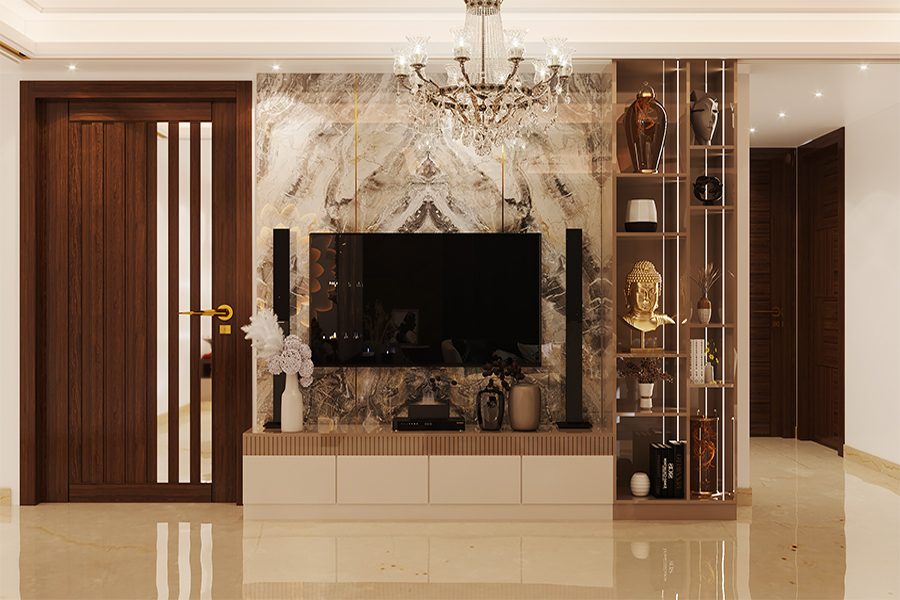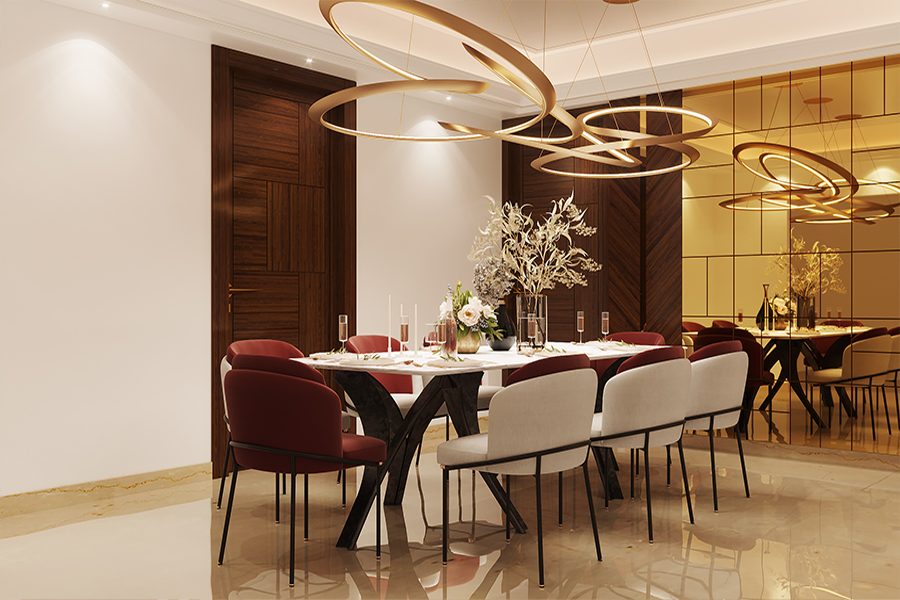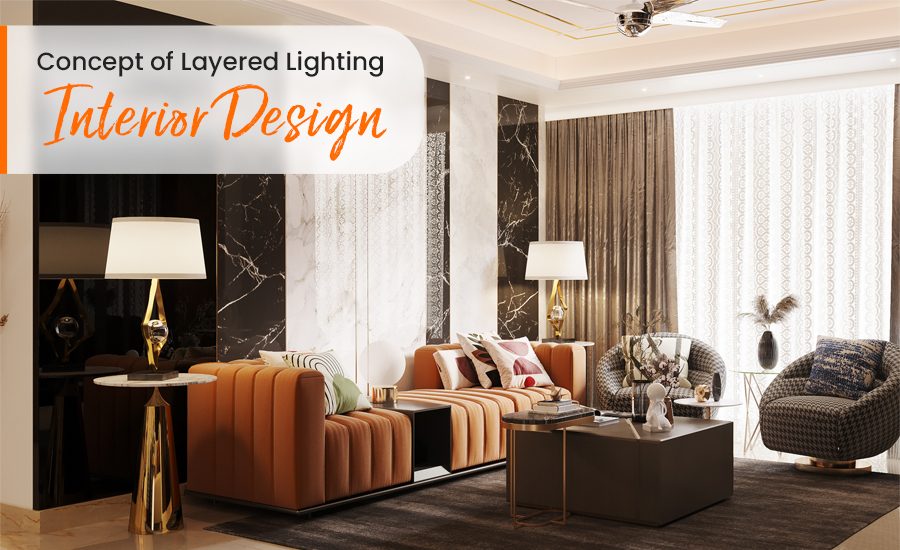Lighting plays a crucial role in interior design. It not only provides necessary illumination, but it can also enhance the ambiance and mood of a space, highlight specific features, and create a sense of depth and visual interest. Here are some important considerations for lighting in interior design:

- Purpose and function: Consider the purpose and function of the space when selecting lighting. For example, a kitchen will require brighter task lighting for food preparation, while a bedroom may require softer ambient lighting for relaxation.
- Layers of lighting: As mentioned above, layered lighting is important for creating a well-lit and visually interesting space. Incorporate ambient, task, and accent lighting to create a balance of light sources.
- Color temperature: The color temperature of light can greatly affect the mood and feel of a space. Warm tones, such as yellow and orange, can create a cozy and inviting atmosphere, while cool tones, such as blue and white, can create a more energetic and modern feel.
- Placement: The placement of lighting fixtures is also important. Consider the size and layout of the space when deciding where to place lighting sources.
- Style and design: Lighting fixtures can also serve as decorative elements in a space. Choose fixtures that complement the style and design of the space, and consider unique or statement pieces to add visual interest.
- Energy efficiency: Lastly, consider energy-efficient lighting options such as LED bulbs or fixtures. These options can save energy and reduce costs in the long run.
Layered lighting is an essential concept in interior design that involves creating a balance between ambient, task, and accent lighting. The concept of layered lighting is all about using different types of lighting sources to create a well-lit space that serves multiple purposes. By layering different lighting sources, you can create a dynamic and visually interesting space that is both functional and aesthetically pleasing. The three main layers of lighting include:
The three main layers of lighting include:
- Ambient lighting: This is the general lighting that provides overall illumination to a room. It can be achieved through the use of ceiling-mounted fixtures, chandeliers, or recessed lighting. Ambient lighting is important because it creates a base level of illumination that allows people to move around and see clearly in a space.
- Task lighting: This is lighting that is specifically designed to help people perform specific tasks, such as reading, cooking, or working on a computer. Task lighting can be achieved through the use of table lamps, desk lamps, or under-cabinet lighting. Task lighting is important because it provides the necessary illumination for people to perform specific tasks comfortably and without strain.
- Accent lighting: This is lighting that is used to highlight specific features of a room, such as artwork, architectural details, or decorative objects. Accent lighting can be achieved through the use of wall sconces, picture lights, or track lighting. Accent lighting is important because it adds depth and visual interest to a space, and can also help create a specific mood or atmosphere.
By combining these three layers of lighting, you can create a well-lit space that is both functional and aesthetically pleasing. When designing a space, it’s important to consider all three layers of lighting and how they can work together to create the desired effect.

